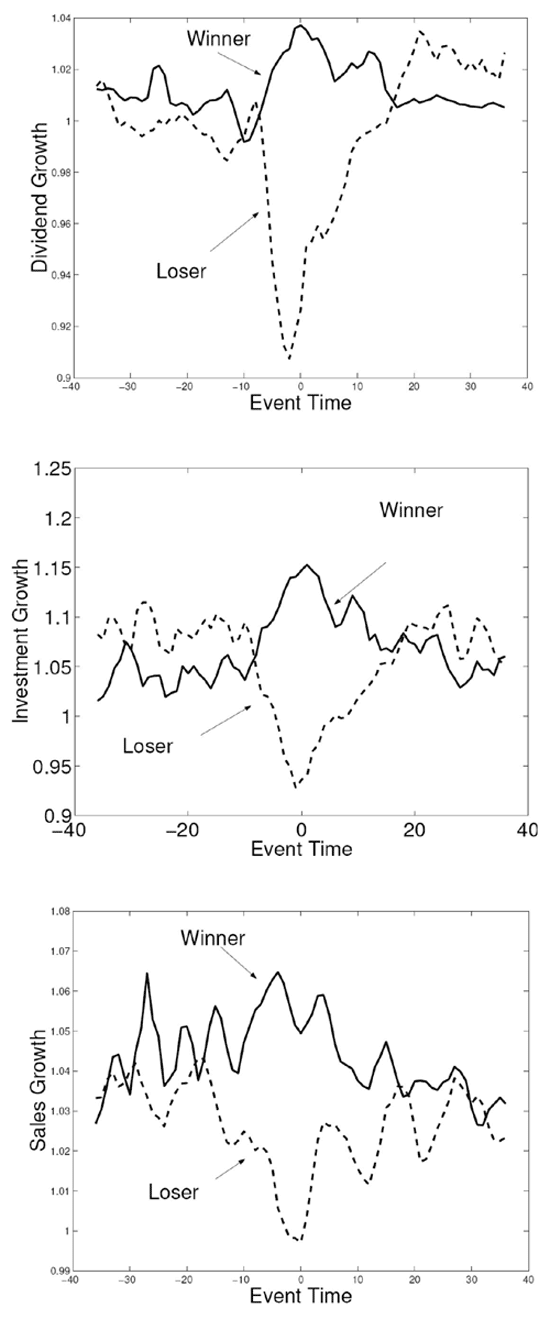In their June 2005 paper entitled “Momentum Profits and Macroeconomic Risk”, Laura Liu, Jerold Warner and Lu Zhang examine the connection between momentum returns and the overall economy, using the growth rate of industrial production as a proxy for the economic trend. They use monthly data for a large selection of common stocks listed on the NYSE, AMEX, and NASDAQ from January 1960 to December 2001 to construct ten equally weighted momentum portfolios, ranking on past six-month returns and holding for six subsequent months. They find that:
- The average winner-minus-loser (top decile minus bottom decile) excess return is 0.85% per month.
- Winning portfolios are more sensitive to the industrial production growth rate than are losing portfolios. In other words, they are at greater risk with respect to changes in the overall economy. This condition is temporary and asymmetric, driven by the high sensitivity of stocks in the highest deciles.
- This difference in sensitivity is economically significant, accounting for up to 40% of excess returns for momentum investing.
- Winners have temporarily higher average future growth rates of dividends, capital investment and sales than losers. At the month of portfolio formation, the growth-rate differentials between winners and losers are sizable: 11% in quarterly dividend growth, 22% in quarterly capital investment growth and 5% in quarterly sales growth. The duration of these growth differentials roughly matches that of the momentum returns.
The following charts, extracted from the paper, illustrate the differentials between winner and loser portfolios noted in the last bullet above. Growth rates are quarterly, and event times are in months. All growth rates show reversion for both winner and loser portfolios.

In summary, momentum investing works, driven partly by reward for the risk of the unusual but transitory sensitivity of high-momentum stocks to overall economic growth.